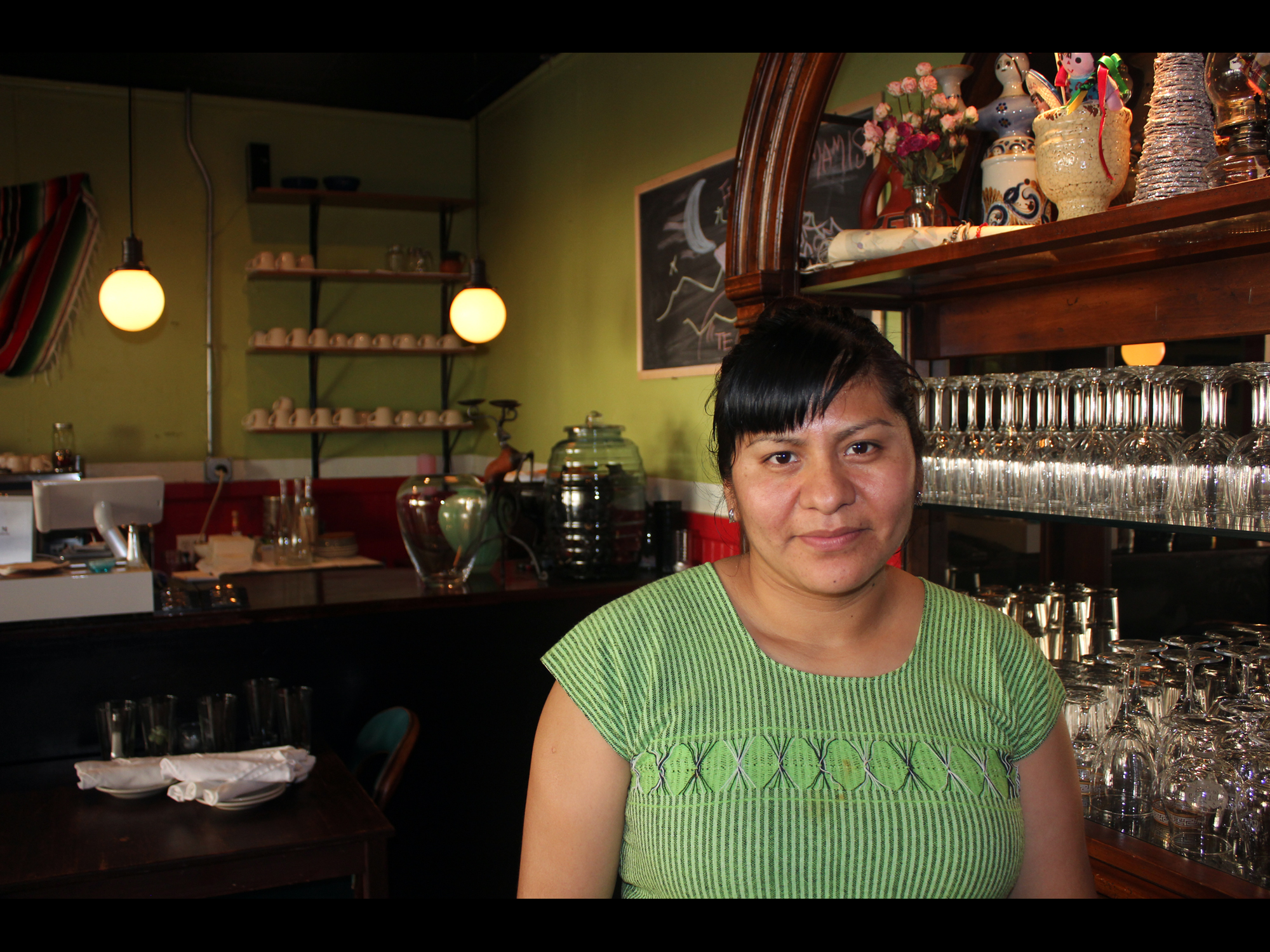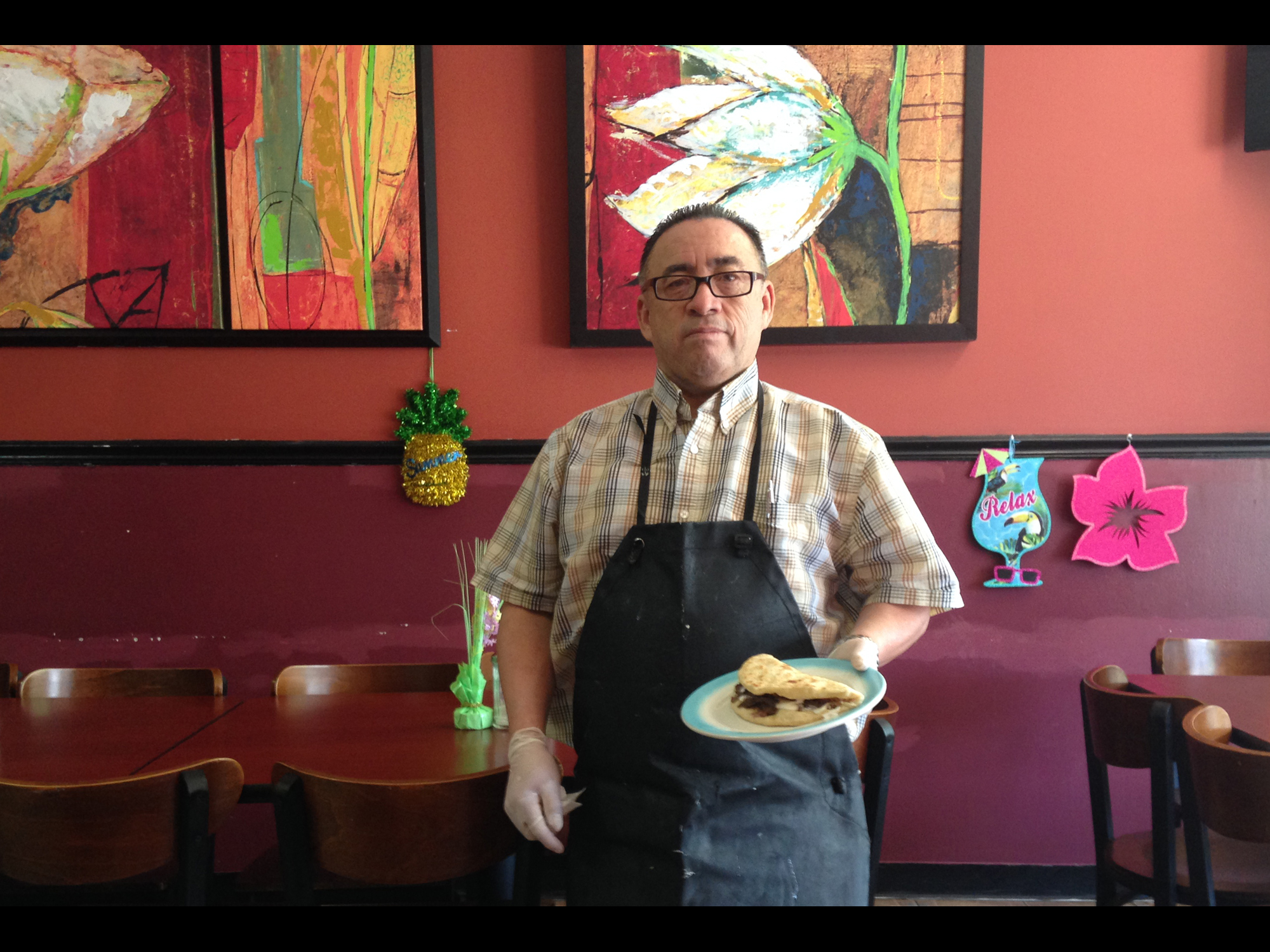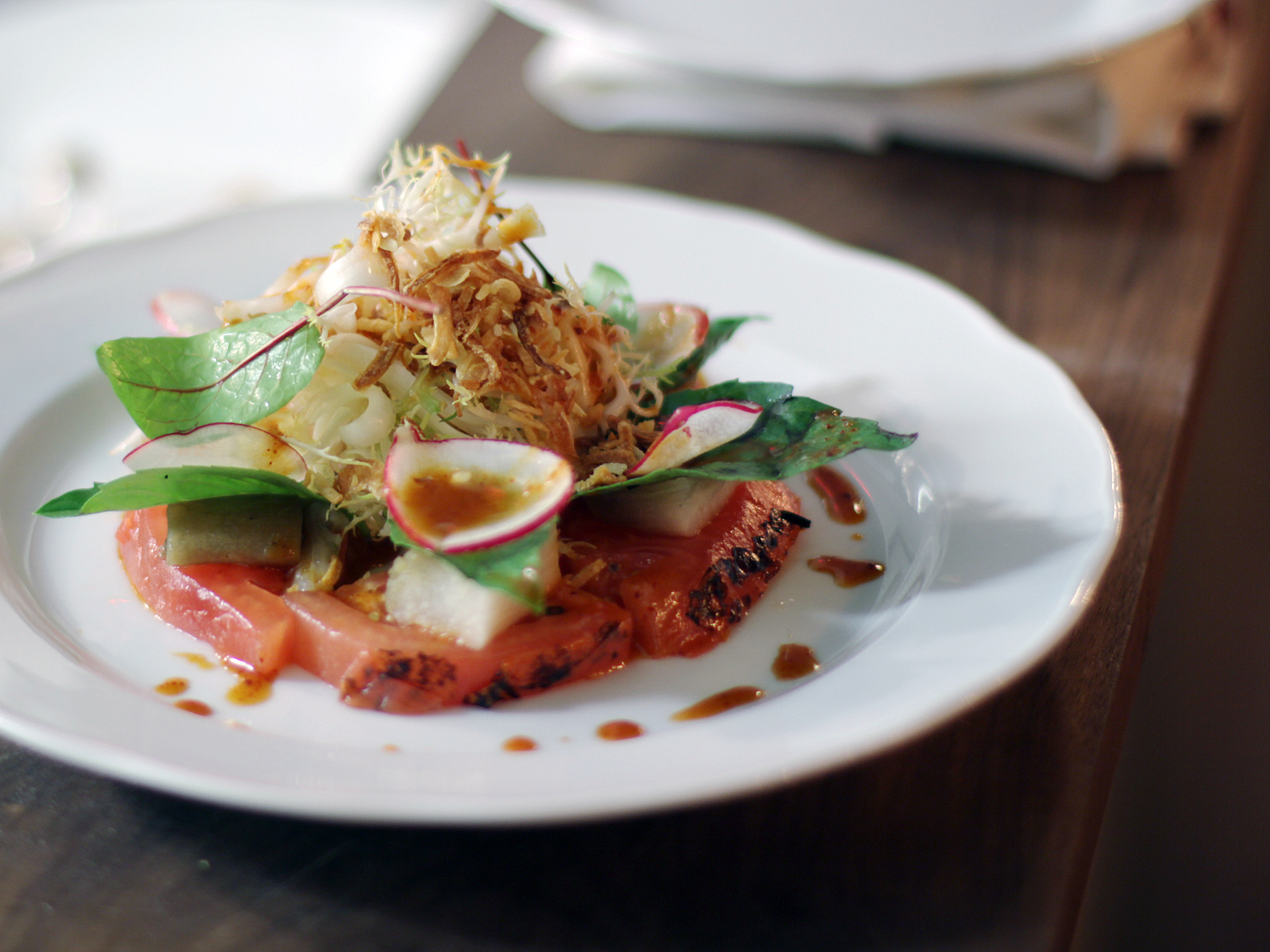“IN NEPAL,” SAYS SWADESH SHRESTHA, “YOU INVITE people to have chai. The first thing you offer a guest is chai. Some households, you remember them by the chai, they have really good chai.”
Shrestha, his wife Rajee Aryal, his brother Saujanya and his wife Nadine Schafer all own Chiya Chai in Logan Square, and that’s a pretty good summation of its philosophy, too. The sunny cafe could be a Logan Square coffee house, but its focus instead is on chai—tea mixed with milk and spices, which is what Indians decided to do with tea once the British made it a national drink—and on a small but appealing menu of comfy Nepali-spiced pies and momo, dumplings.
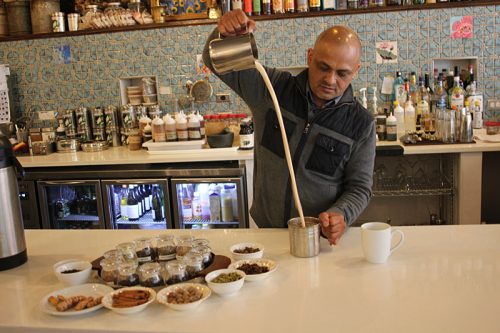
Swadesh Shrestha making chai
Chai has taken off in America as another way to get your Starbucks on—as writer Sonali Kohli put it, “Chai in the West has become synonymous with the overly sweet, oddly spicy blend that Starbucks sells as a Chai Tea Latte,” a redundant name since “chai” just means tea. (But then Chiya Chai is likewise redundant—”chiya” is the Nepalese word, “chai” the Hindi one.)
Shrestha wants to show Chicagoans what chai should be—a harmonious blend of tea, milk and spices with a sweet note but not the 42 grams of sugar in a Starbucks grande, more than a can of Coke. “Chai is so adaptable, it adapts to a lot of tastes,” Shrestha says. “Growing up I went to a lot of chai places, to teahouses, and all the chais are different.”
“Chai adopts the personality of the place, or the households. We have all different kinds of chais, that really went well with the black tea and the milk. It’s not like you mix every spice and it’s sweet and that’s chai. We try to give every chai an independent identity, a character to it,” he says.
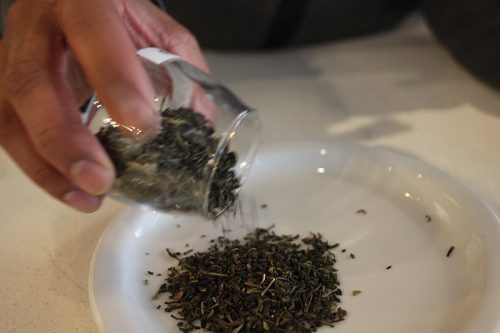
Tea from Nepal
SHRESTHA SAYS “I GREW UP IN A tea family. My father grew tea.” The idea of tea in the far east conjures up images that seem to go back to time immemorial, but in Nepal it’s a relatively new crop, going back only about 75 or 80 years. Shrestha’s father was attending college in Germany in the late 1970s, when he decided to go back to Nepal to do something to help grow the local economy and create jobs. His idea was to create grow tea and to create a tea farmer’s cooperative to export Nepalese tea.
Shrestha moved to the U.S. in 2000. “And when I get here the only thing I can think to do is to sell tea. I imported from the tea from my father, and the business became a restaurant,” called Namaste Cafe, in Minneapolis. It still exists, and the import business services a number of accounts in the Minneapolis area, coops and retailers in the region.
Some years later his wife was getting her MFA at the Art Institute of Chicago, and he was traveling back and forth between the two cities, and he noticed “there were not many tea or chai places here.” He began developing a concept for a place called Chais and Pies—on the one hand, offering authentically-made chai, and on the other, British-style pies. “That represents the British side. The British are the ones who introduced tea to the world,” he says.
Chais and Pies proved a bit limiting as a menu concept, but that’s basically the idea behind Chiya Chai. “We offer foods from tea-growing regions, dumplings from Darjeeling, momo from Katmandu, samosas from India,” he says. “Wherever you go in India to have chai, you are going to have a samosa or something like that to eat along with it.”
It’s not like you mix every spice and it’s sweet and that’s chai. We try to give every chai an independent identity.
The foods are served in the cafe during the day, and at night a back room opens up for sit-down dinner, with curries and other Indian and Nepalese dishes. They’re mostly authentic in nature, though they’re willing to fiddle around with classic recipes to make them appealing to a Western palate—for instance, typically with a pie or a curry you would get raita, a yogurt dip with cucumber in it. But Chiya Chai’s raita has, instead, slices of green apple, because the sweetness made it more appealing and interesting with the spice tinge of the pies.
“The food is like homestyle food, so people can have it every day,” Shrestha says. “It’s home cooking with a lot of love and care. It’s not heavy—we balance the food so you have some vegetables, lentils, you can have soup. It’s something you can eat every day.”
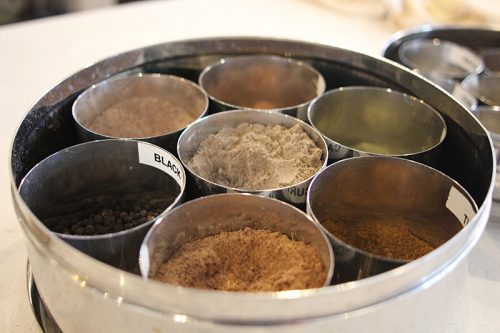
Spices for chai
SHRESTHA GOES BEHIND THE COUNTER TO show me how a chai is made properly. Though again, they’re not unwilling to mess with the traditions of chai-making—using not just the traditional black tea but offering, as the base for a chai, green tea made with matcha or a fruit-flavored rooibos. “We have different categories,” he says. “First they pick out the combination of chais, after that they can pick what combination of tea– black, matcha, they can choose caffeine free. Regular milk or skim or almond milk, soy milk, rice milk.” Another popular thing in the summer is what he calls “fruity chais—” he says it with a musical South Asian lilt, like “farouti chais”—served cold. Blueberry lavender iced chai is one they’re making now, strawberry-coconut is another that will hit the menu soon.
He pulls out a jug of very dark tea, black tea concentrate, and half fills a cup. “Everything is from scratch,” he says. “Our tea is fresh, we use good ingredients, organic milk. We grind the spices here.”
He heats the milk in the chai on the espresso machine, as if he were making a cappuccino. Then comes the dramatic part, the cool part that we all came to see. Raising one of the cups above his head, he pours the chai in a three-foot arc from one cup to the other, perfectly, without spilling a drop.
It’s a cool trick, like spinning plates on the Ed Sullivan Show, but it does have a purpose, Shrestha explains: “It forms a froth in the milk, very clean and very smooth,” he explains. Once the chai is properly mixed, he pours it into the final serving cup and then pulls over a tin box of different fresh spices. In India, each region has a particular way of spicing up a cup of chai, but here it’s an artist’s palette, and your choice of which direction you’d like to go—bright and invigorating with ginger and cardamom, earthy and deep with black pepper and clove (a combination which, the Wikipedia page on chai insists, does not ever happen in India, and is of course explicitly on the menu at Chiya Chai).
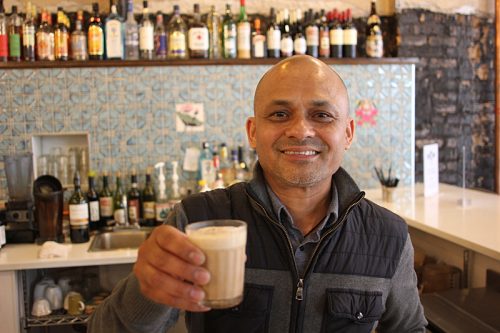
So there it is. Chai, made for me by Swadesh Shrestha, from tea grown by his family or one of the other families in the Nepalese tea coop, and imported by them. Farm to table, as sure as pork from Louis John Slagel or strawberries from Seedling. “From planting and growing it to the customer, this is our own product,” he says proudly, as he hands me the cup.
Michael Gebert is chief content wallah at Fooditor.
Latest
Join the Discussion
After you comment, click Post. If you're not already logged in you will be asked to log in or register with Disqus.





